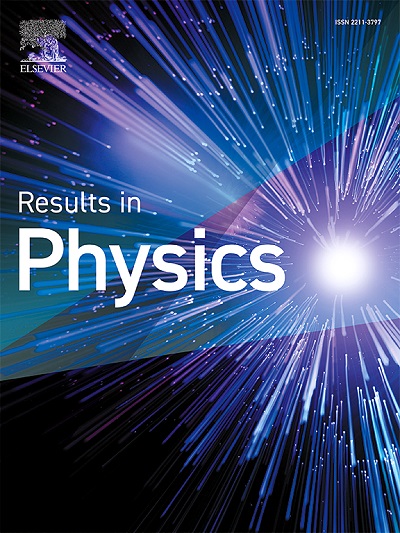Li2X (X = Te, Se, S)硫族化合物的结构、电子、光学和热电性质的第一性原理研究,用于能源和光电应用
IF 4.6
2区 物理与天体物理
Q2 MATERIALS SCIENCE, MULTIDISCIPLINARY
引用次数: 0
摘要
利用密度泛函理论系统地研究了Li2X (X = S, Se, Te)硫族化合物的结构、电子、光学、弹性和热电性质。Birch-Murnaghan拟合的体积-能量分析表明,Li2S具有最大的结构稳定性。带隙从Li2S (~ 3.2 eV)减小到Li2Se (~ 1.8 eV)和Li2Te (~ 1.0 eV),与晶格常数和硫质量相关。Li2Te窄的直接带隙和强杂化表明了热电势,而Li2Se在光电子学方面很有前景。Li2S具有宽带隙和高离子电导率,是光学和固态电解质应用的理想选择。弹性分析表明,Li2Se的刚度和延展性最好,而Li2Te和Li2S表现出较大的各向异性。光学结果证实,较重的硫元增强了反射率和金属丰度,而较轻的硫元促进了绝缘性能。这些发现证明了Li2X化合物在不同能源和电子应用中的可调性。本文章由计算机程序翻译,如有差异,请以英文原文为准。
First-principles investigation of structural, electronic, optical, and thermoelectric properties of Li2X (X = Te, Se, S) chalcogenides for energy and optoelectronic applications
The structural, electronic, optical, elastic, and thermoelectric properties of Li2X (X = S, Se, Te) chalcogenides were systematically investigated using density functional theory. Volume-energy analysis via Birch-Murnaghan fitting reveals that Li2S exhibits the greatest structural stability. The bandgaps decrease from Li2S (∼3.2 eV) to Li2Se (∼1.8 eV) and Li2Te (∼1.0 eV), correlating with lattice constants and chalcogen mass. Li2Te’s narrow direct bandgap and strong hybridization suggest thermoelectric potential, while Li2Se is promising for optoelectronics. Li2S, with a wide bandgap and high ionic conductivity, is ideal for optical and solid-state electrolyte applications. Elastic analysis shows Li2Se is the stiffest and most ductile, while Li2Te and Li2S show greater anisotropy. Optical results confirm that heavier chalcogens enhance reflectivity and metallicity, whereas lighter ones promote insulating behavior. These findings demonstrate the tunability of Li2X compounds for diverse energy and electronic applications.
求助全文
通过发布文献求助,成功后即可免费获取论文全文。
去求助
来源期刊

Results in Physics
MATERIALS SCIENCE, MULTIDISCIPLINARYPHYSIC-PHYSICS, MULTIDISCIPLINARY
CiteScore
8.70
自引率
9.40%
发文量
754
审稿时长
50 days
期刊介绍:
Results in Physics is an open access journal offering authors the opportunity to publish in all fundamental and interdisciplinary areas of physics, materials science, and applied physics. Papers of a theoretical, computational, and experimental nature are all welcome. Results in Physics accepts papers that are scientifically sound, technically correct and provide valuable new knowledge to the physics community. Topics such as three-dimensional flow and magnetohydrodynamics are not within the scope of Results in Physics.
Results in Physics welcomes three types of papers:
1. Full research papers
2. Microarticles: very short papers, no longer than two pages. They may consist of a single, but well-described piece of information, such as:
- Data and/or a plot plus a description
- Description of a new method or instrumentation
- Negative results
- Concept or design study
3. Letters to the Editor: Letters discussing a recent article published in Results in Physics are welcome. These are objective, constructive, or educational critiques of papers published in Results in Physics. Accepted letters will be sent to the author of the original paper for a response. Each letter and response is published together. Letters should be received within 8 weeks of the article''s publication. They should not exceed 750 words of text and 10 references.
 求助内容:
求助内容: 应助结果提醒方式:
应助结果提醒方式:


